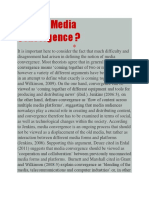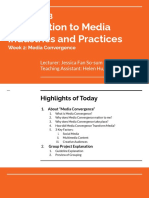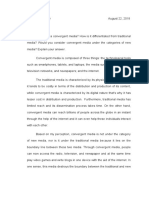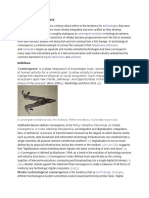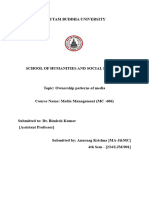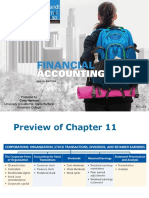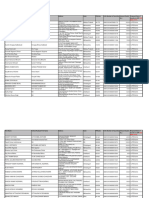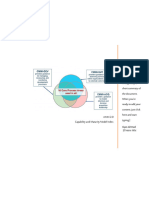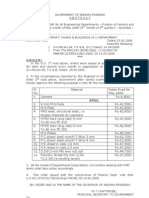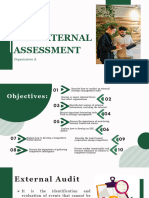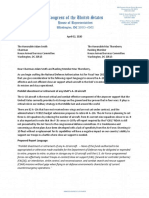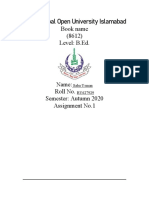Q.
Chapter 1 says that, "convergence and the interactive media technologies that it has spawned
are key features of today's media environment." (p. 20). Is convergence a positive/negative
feature of today's media environment?
Media convergence has sparked a long-lasting controversy on its implications to present media
environment. By either acknowledging its positive influences, or the other way around, is
beneficial for obtaining a deeper insight into convergence itself and therefore paves the way for
its further improvement and application. From my perspective, I will argue that convergence has
an overall positive influence in today’s media environment.
Convergence takes on multiple forms, including technological convergence, corporate
convergence and so on. Among these, the most prominent and mutually beneficial relationship is
the close connection between technology and convergence. According to Gasher et al. (2020),
“The term convergence was initially coined to describe the merging, or bringing together, of a
wide range of previously separate and distinct communication technologies and media” (p. 18). 1
This indicates that the media technology played a significant role in the emergence of
convergence. Meanwhile, convergence, by fostering the integration of technologies, spurs further
advancements in media technology. Take the evolution of mobile phones, for example.
Nowadays, what users can accomplish on an iPhone far surpasses what was possible with an old
Nokia flip phone. The increasing tendency of convergence is driving media technologies to
develop in a faster and more extensive extent; consequently, it motivates the innovation of media
technology and accelerates technological development speed. Although the appearance of
convergence is primarily credited to technology, convergence contributes actively to media
technology development in subsequent stages.
Additionally, convergence introduces a novel approach to participating in media events by
involving digital technologies and platforms that enhance interactivity. Lawrence Lessig (2008),
an American scholar and political activist, argues that digital technologies have created a more
interactive and participatory culture, namely, “Read/Write” culture (p. 28-31). 2 Compared to the
previous situations which online users were merely regarded as passive consumers of various
media content, the omnipresence of “Read/Write” culture due to media convergence, is a
breakthrough that no longer restricts users of new media as simply consumers; instead, it
encourages consumers to edit and produce their own media products. From this aspect, online
users are constantly and simultaneously shifting their roles in between producers and consumers.
Bloggers and Youtubers, for instance, post videos reacting towards other media content. They
consume narratives from certain media products and then produce new content based on their
own interpretations. Furthermore, participation is highly encompassed in today’s media society,
promoting democracy and decentralizing power distribution. Individuals have more opportunities
to express their opinions to a broader audience, while the concentration of authority tends to be
1
Gasher, M., Skinner, D., Coulter, N., & Lorimer, R. (2020). Defining the Field. In Media and
Communication in Canada: Networks, culture, technology, audiences (pp. 18). essay, Oxford
University Press.
2
Lessig, L. (2008). RW Culture Versus RO Culture. In Remix: Making art and commerce
thrive in the hybrid economy (pp. 28–31). essay, Penguin Books.
�impaired as it’s more challenging for authorities to restrict speech freedom. Therefore,
convergence significantly expands media accessibility and promotes media democracy.
However, despite convergence has two major advantages, there still lies some issues to be
solved, such as endangerment of legacy media and the digital divide. Gasher et al. (2020)
describe the unequal access to Canada as that while some of us are accessible to high-speed
signal every day, citizens in rural or remote areas lack fundamental dial-up internet services (p.
9). 3In this context, convergence, relying on technology, may worsen the unbalanced situation;
widen this divide even broader. Another growing concern associated with convergence is the
potential impair on traditional media. Some argue that the media convergence may render legacy
media obsolete. But Gasher et al. (2020) oppose this viewpoint by suggesting that traditional
media is being incorporated into the new media, rather than completely replaced (p. 4). 4 As a
result, the foundations of legacy media are preserved, even though some traditional media
features may be compromised during the integration process.
In conclusion, this essay examines the question of whether convergence has a positive or
negative impact on today's media environment. I have argued that, despite several negative
issues associated with convergence, its overall influence on today's media landscape remains
positive. Just like any phenomenon, convergence presents both advantages and disadvantages.
However, it is the overwhelming benefits it offers that make it a positive element in today's
media environment.
References
3
Gasher, M., Skinner, D., Coulter, N., & Lorimer, R. (2020). Defining the Field. In Media
and Communication in Canada: Networks, culture, technology, audiences (pp. 9). essay,
Oxford University Press.
4
Gasher, M., Skinner, D., Coulter, N., & Lorimer, R. (2020). Defining the Field. In Media
and Communication in Canada: Networks, culture, technology, audiences (pp. 4). essay,
Oxford University Press.
�Gasher, M., Skinner, D., Coulter, N., & Lorimer, R. (2020). Defining the Field. In Media and
Communication in Canada: Networks, culture, technology, audiences (pp. 4). essay,
Oxford University Press.
Gasher, M., Skinner, D., Coulter, N., & Lorimer, R. (2020). Defining the Field. In Media and
Communication in Canada: Networks, culture, technology, audiences (pp. 9). essay,
Oxford University Press.
Gasher, M., Skinner, D., Coulter, N., & Lorimer, R. (2020). Defining the Field. In Media and
Communication in Canada: Networks, culture, technology, audiences (pp. 18). essay,
Oxford University Press.
Lessig, L. (2008). RW Culture Versus RO Culture. In Remix: Making art and commerce thrive
in the hybrid economy (pp. 28–31). essay, Penguin Books.


